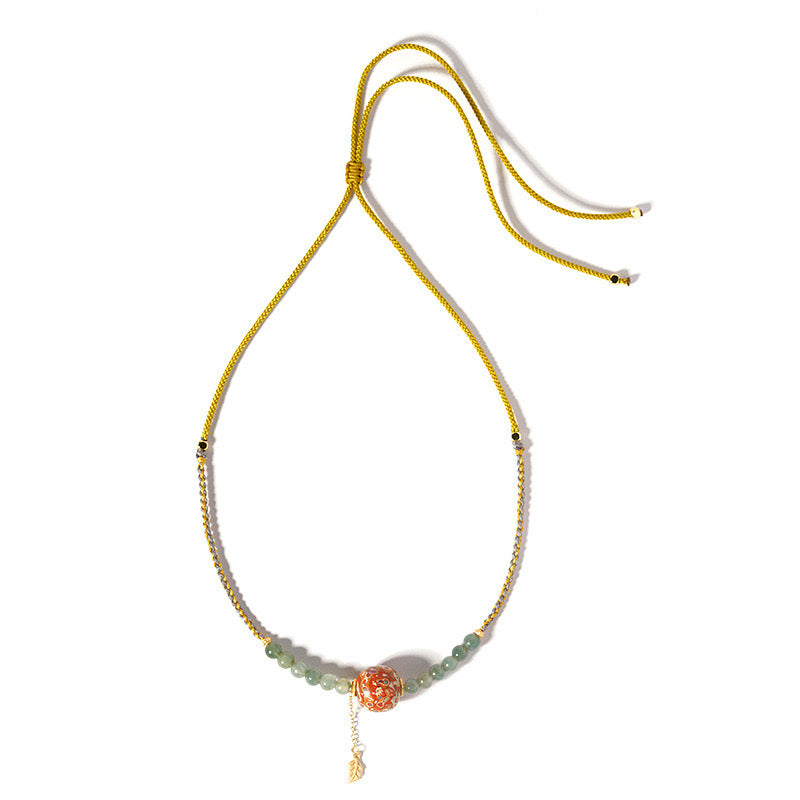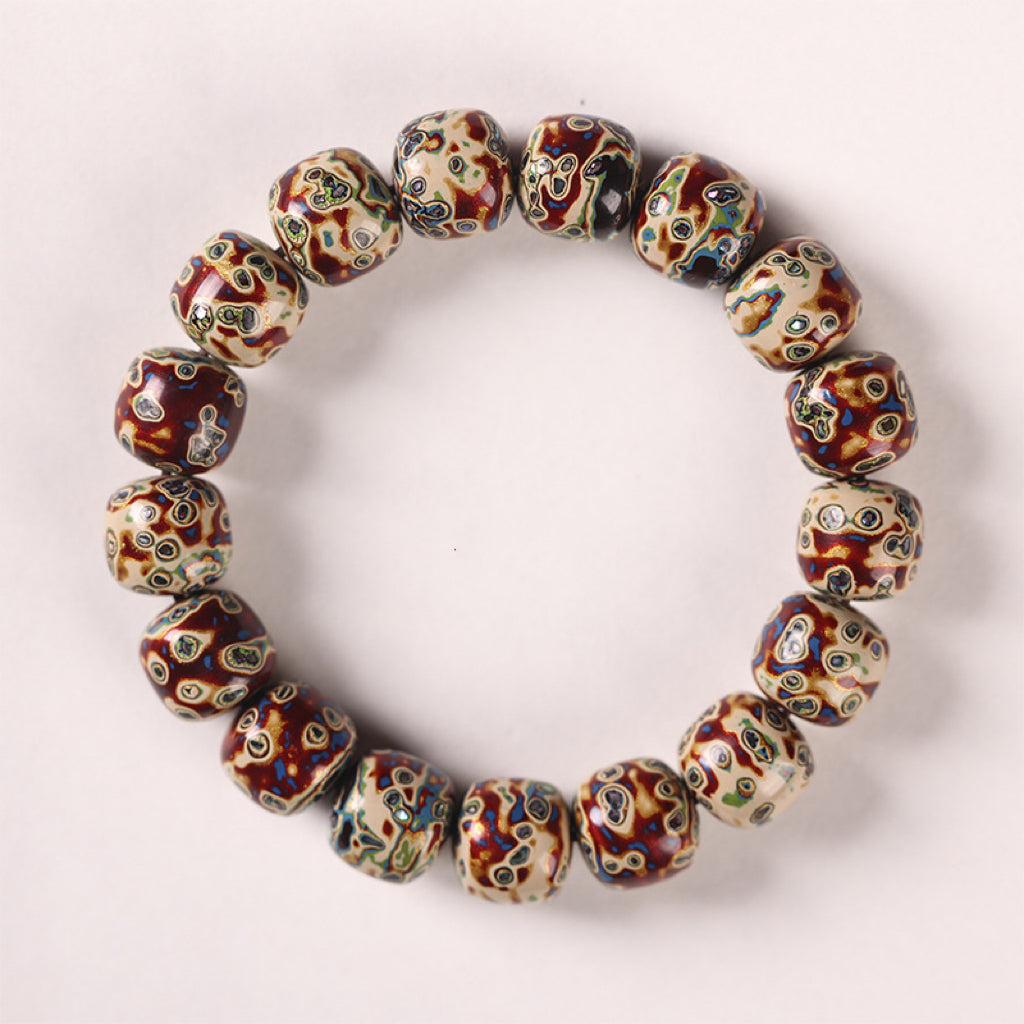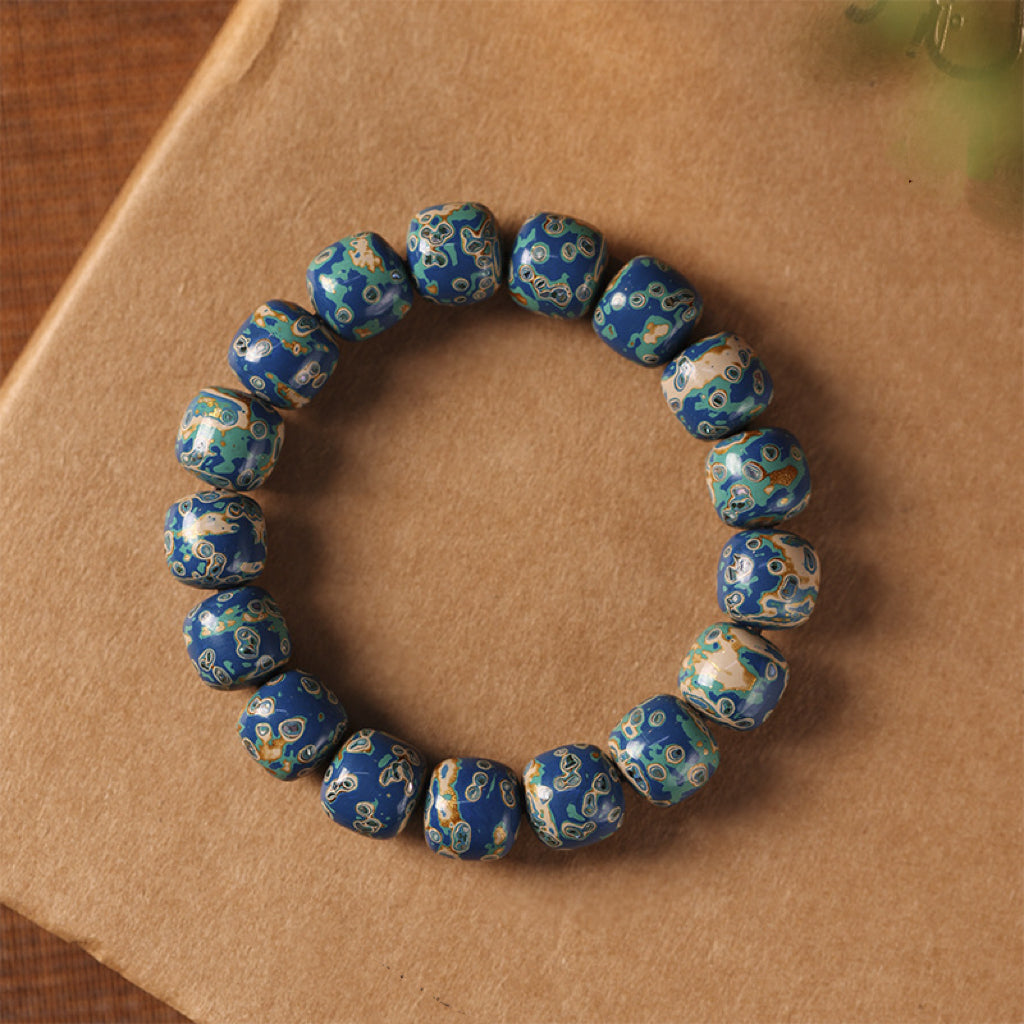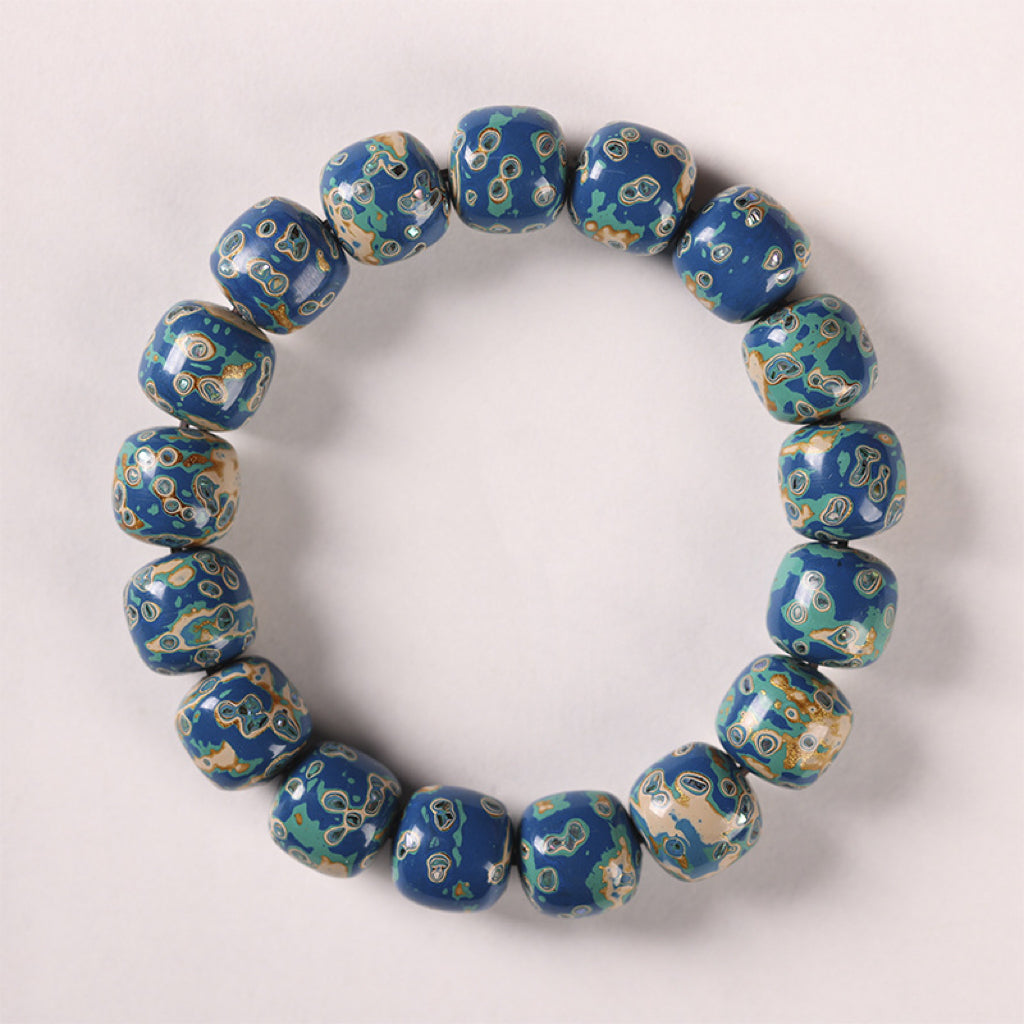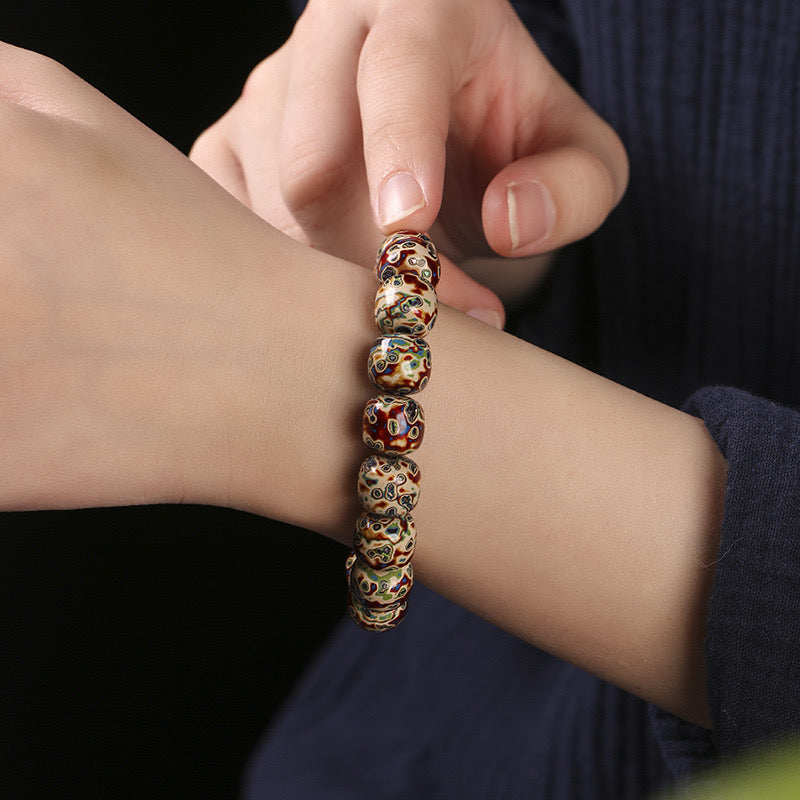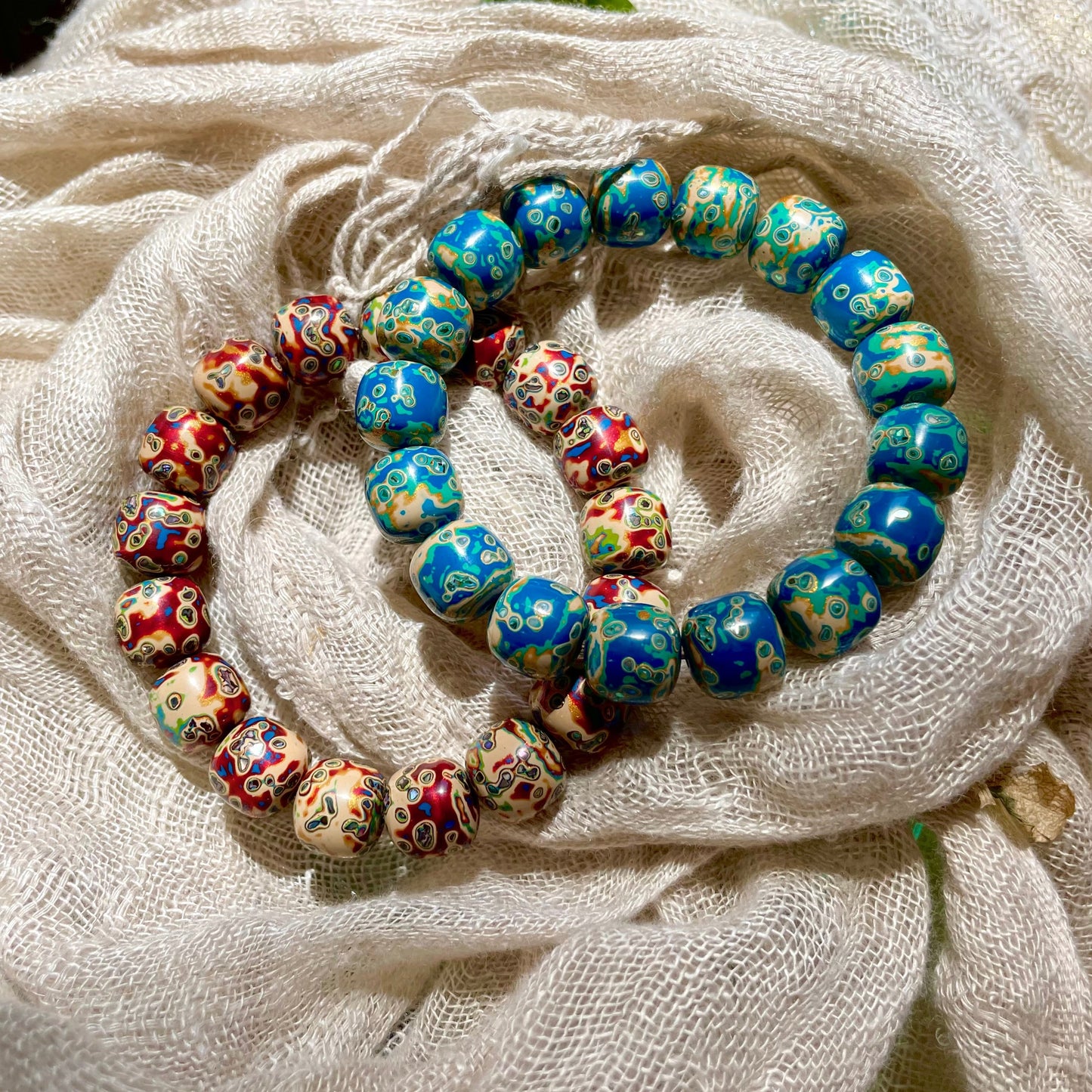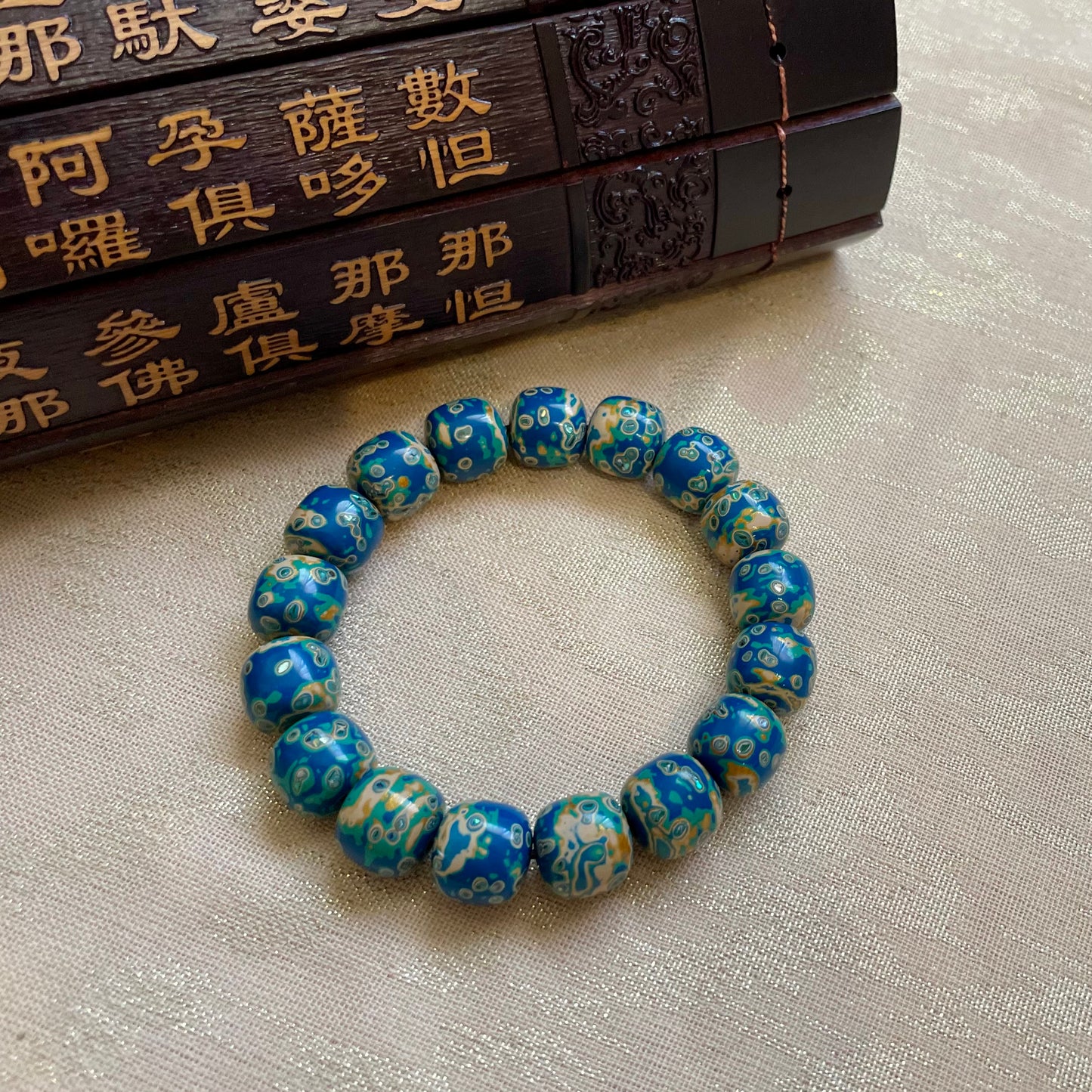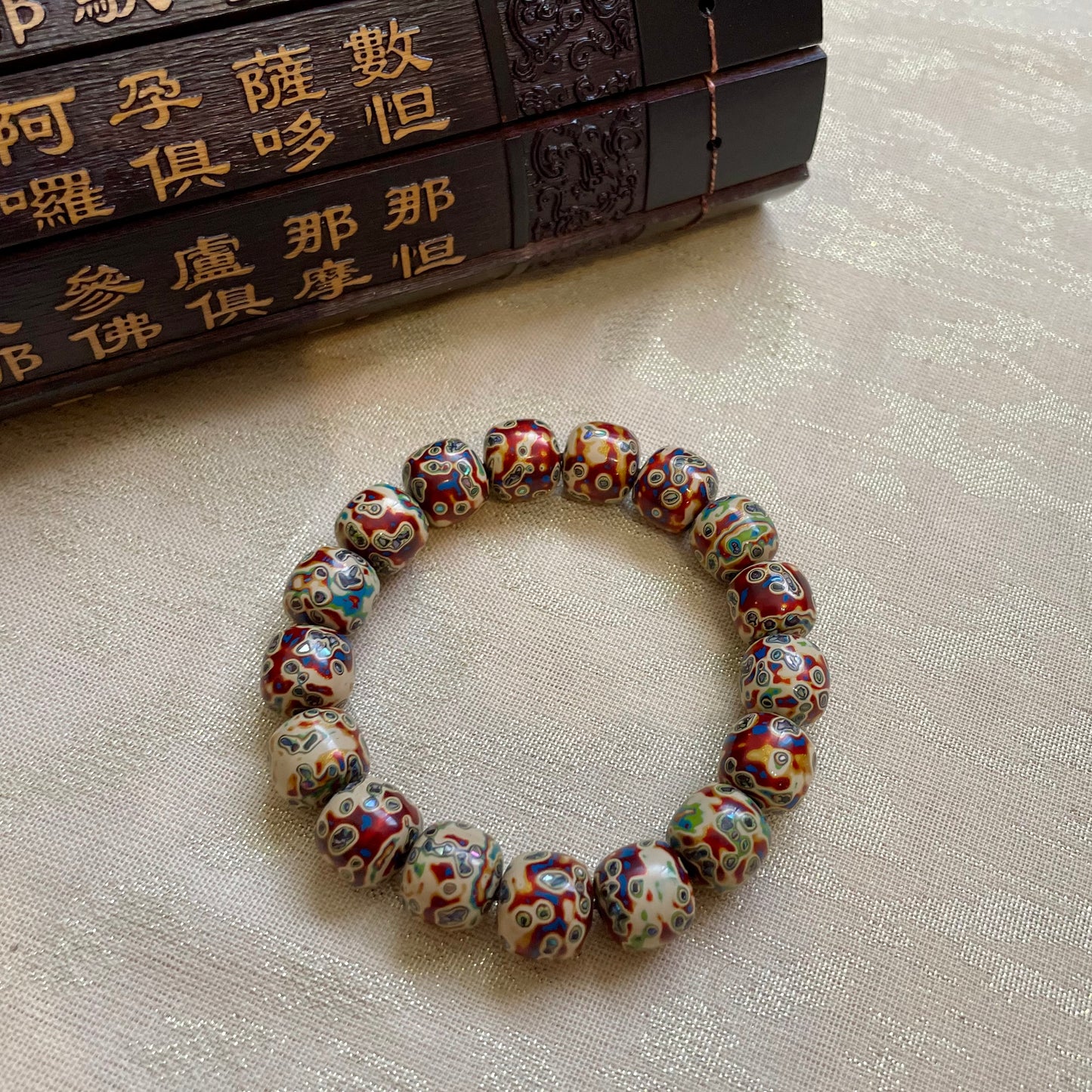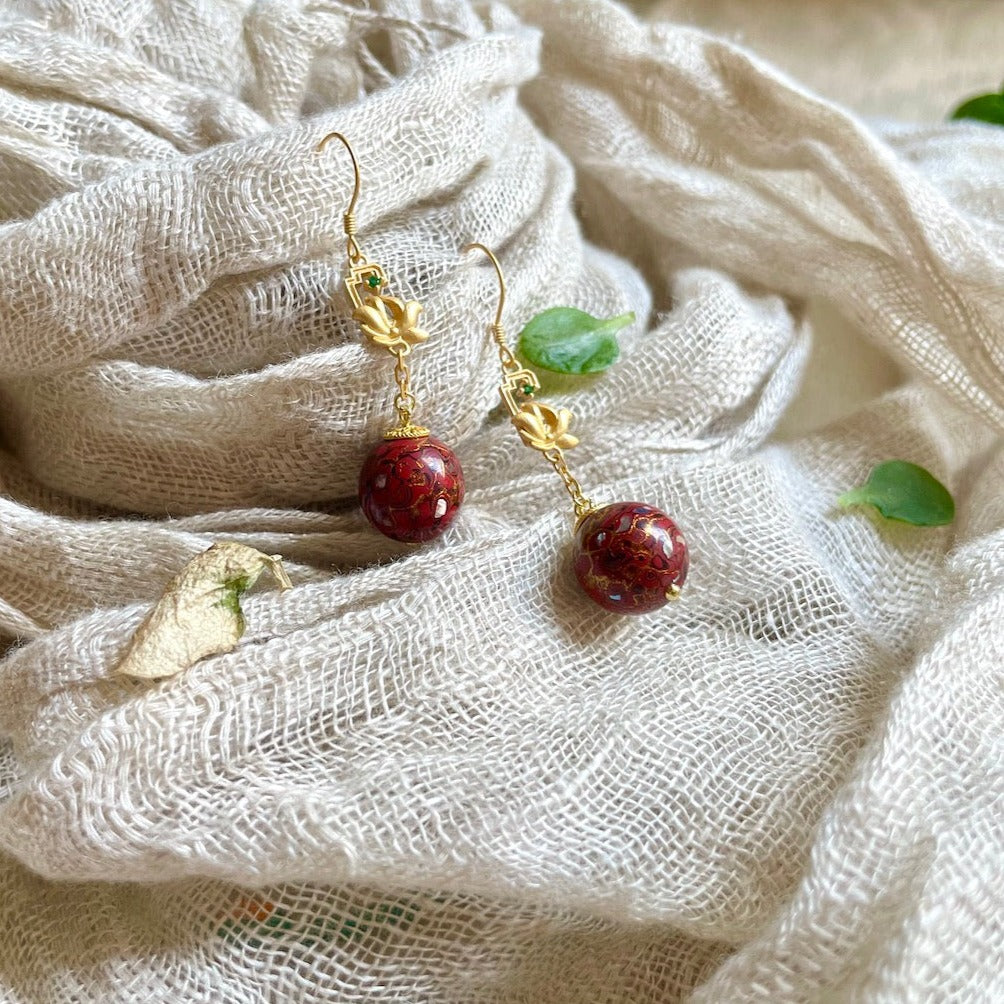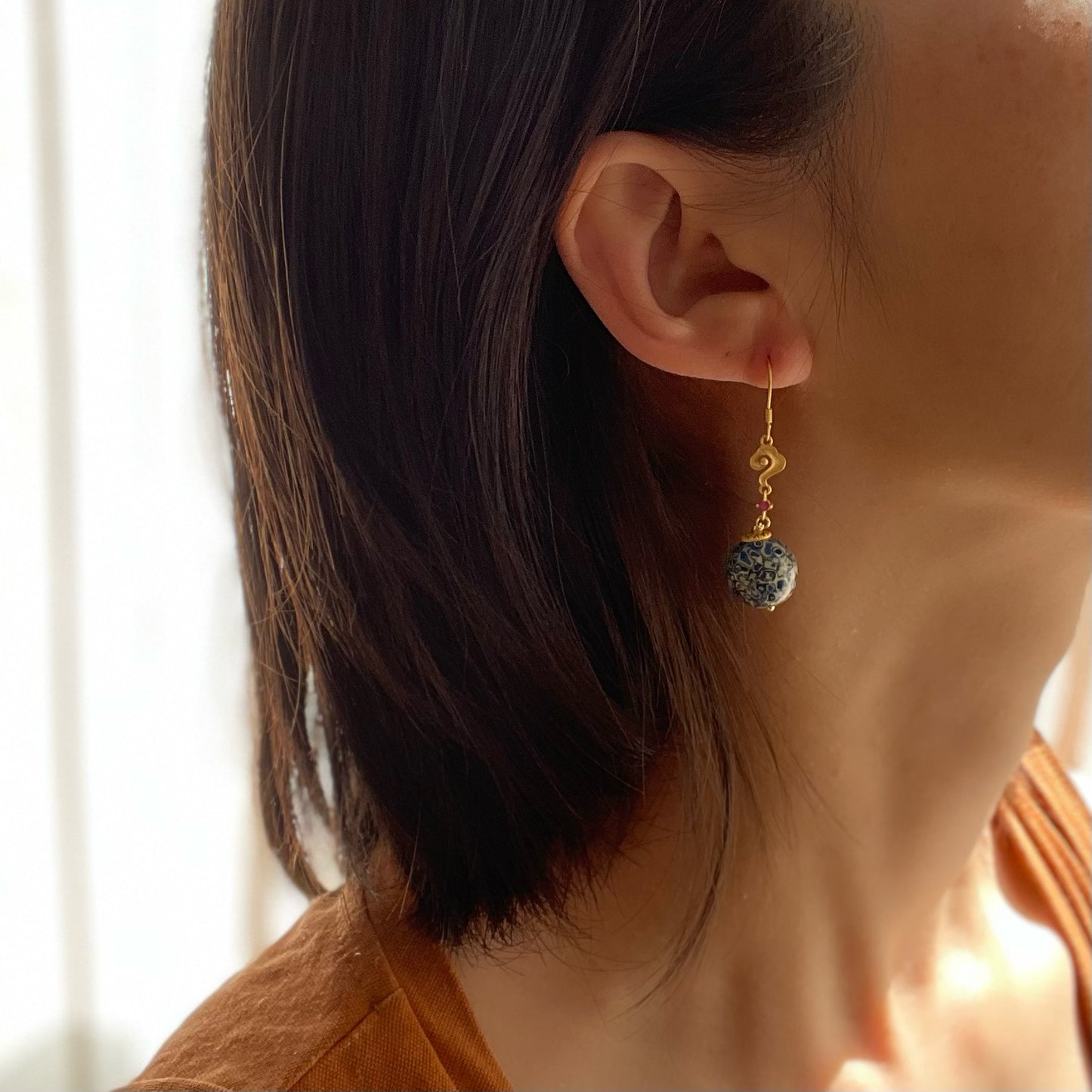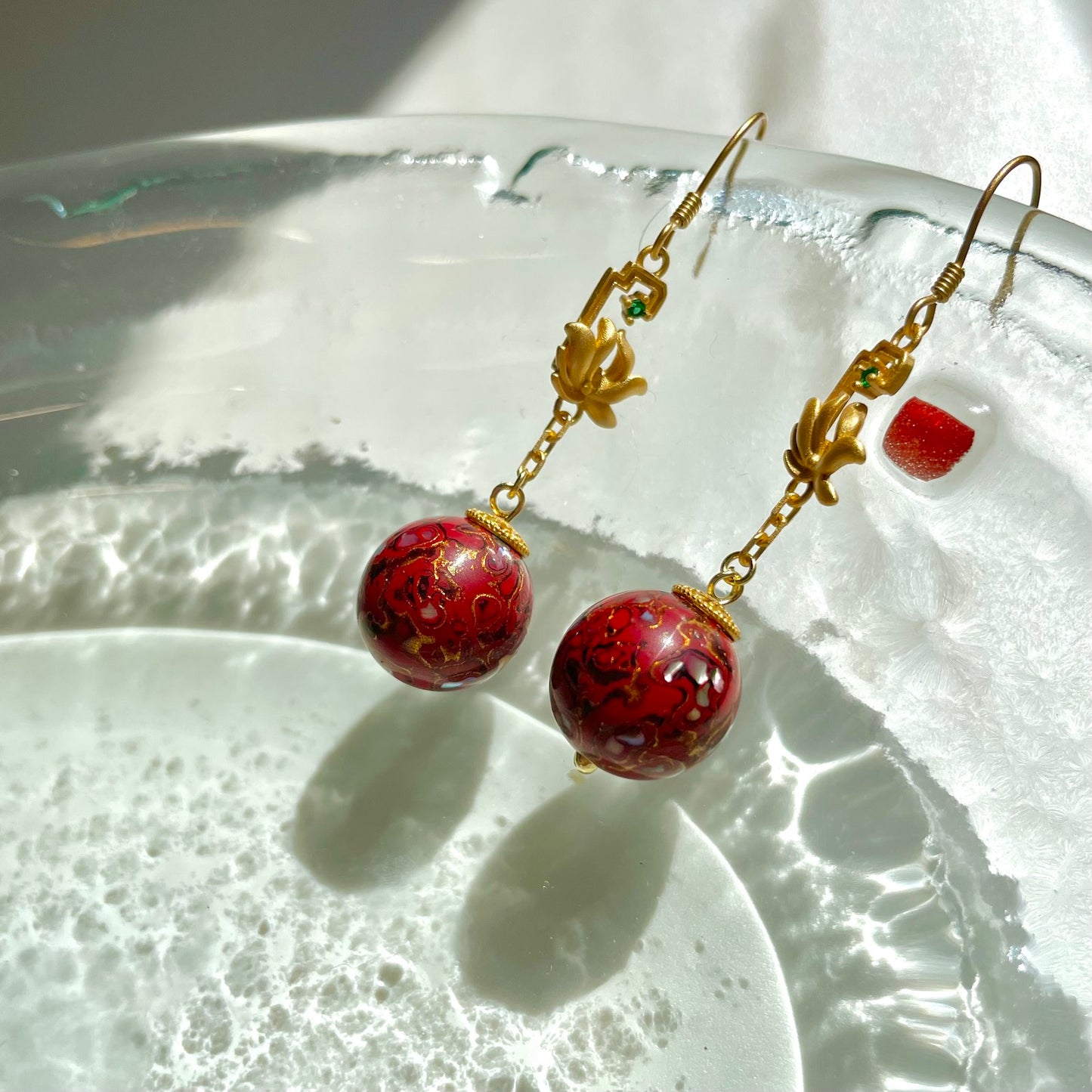
I. The origin of lacquerware and its evolution
Lacquerware (in Chinese: 漆器 Qíqì) is a type of decorative object which has been practiced for thousands of years. It is highly prized for its intricate designs, which often incorporate gold or silver foil, and for its ability to last for centuries with proper care. Lacquerware is coated in a natural resin (called lacquer) purified and dehydrated from the sap of the Rhus verniciflua tree, native to China.


Lacquer is a unique and ancient decorative material used in China, and there is no synthetic coating that can surpass its primary properties such as hardness and durability. Hence, it is known as the "king of coatings".
The resin is used to coat various types of objects, including bowls, trays, boxes, and furniture, to create a hard, glossy finish that is resistant to water and other damage.

China has the earliest history of using lacquerware, which dates back around 8,000 years.
According to the Zhejiang Cultural Relics Bureau website: "On July 7, 2021, it has been officially announced that two wooden artefacts excavated from the Jingtoushan site have been identified as the earliest lacquerware in China. This discovery pushes back the history of lacquer use in China and even the world by more than 8,000 years." The research paper has been published online in the international well-known scientific archaeological journal "Archaeometry”.
According to Chinese mythology, the Yellow Emperor (Huangdi), a legendary figure who lived around 2,700 BC, was the first person to discover the properties of lacquer. The story goes that while resting under a tree, the Yellow Emperor accidentally spilled the sap of the tree onto his hand. He noticed that the sap formed a hard, durable coating that protected his skin, and he began to experiment with using the sap to create a variety of objects, including weapons, armor, and furniture.
In the history of China, lacquer craftsmanship occupies a special position, which is no less important than silk and porcelain, but is even more widely applied than them. It was primarily used by the nobility and wealthy merchants for serving food and displaying artwork. During the Song Dynasty (960-1279), the production of lacquerware reached its peak, with artisans creating exquisite pieces with intricate designs and using a variety of techniques such as carving, inlaying, and painting. The Ming and Qing Dynasties also saw a continuation of this tradition, with the production of lacquerware becoming more widespread and diverse.

Lacquerware was brought from China to Japan and quickly became an important part of Japanese culture (during Tang and Song dynasties).
Since then, lacquerware has been an important part of Japanese culture for centuries and is often associated with Japanese craftsmanship and aesthetics, the word "Japan" is being used metaphorically to refer to lacquerware or to the Japanese lacquerware tradition.
Meanwhile, Japanese artisans added their own elements into lacquerware, incorporating traditional Japanese motifs and techniques such as maki-e (sprinkled picture) and chinkin (gold inlay). The production of lacquerware in Japan reached its peak during the Edo period (1603-1868), with artisans creating elaborate pieces for the wealthy merchant class and for export to Europe and other parts of the world.
Today, lacquerware continues to be an important part of East Asian art and culture, with artisans carrying on the traditions of their ancestors while also exploring new techniques and designs.
II. The craftsmanship of lacquer beads
Chinese lacquer craft is a handicraft that involves surface coating, painting, carving, and embellishing with different colours to create a three-dimensional artistic sense.

Lacquer beads, also known as 大漆珠 (Dà qī zhū) in Chinese, are one of its product categories. The beads can be used for a variety of decorative purposes, such as in jewelry, embroidery, and inlay work.
Lacquer beads were first created during the Han Dynasty (206 BCE - 220 CE) by a talented craftsman named Liu Xie. According to the legend, Liu Xie was inspired by a beautiful sunset and wanted to capture the colors of the sky in a bead. He experimented with various materials and techniques until he finally discovered a way to apply layers of colored lacquer onto a wooden bead to create a stunning, iridescent effect that resembled the colors of the sunset.
The legend goes on to say that Liu Xie's lacquer beads became very popular and were even used as currency during the Han Dynasty. They were also highly valued for their beauty and durability, and were often given as gifts to royalty and nobility.
While the story may be just a legend, it highlights the long history and cultural significance of lacquer beads in China. They continue to be admired and treasured today for their intricate beauty and skilled craftsmanship.
Using natural raw lacquer harvested from lacquer trees, the lacquer is layered onto a bead made of fine wood, and patterns are depicted with different colored lacquers. After a series of drying and polishing processes, the surface shows the pattern through the layers of lacquer. Making a lacquer bead requires repeated brushing and polishing processes dozens of times, gradually building up the colours to be bright and vivid, the surface glossy and moist, and the lacquer coating natural and pure.

To be more precise, here are the basic steps for making a lacquer bead:
1️⃣ Shaping the base: The base of the bead is usually made of wood or bamboo, and is shaped into the desired size and form.
2️⃣ Applying the lacquer: The base is coated with multiple layers of lacquer, each layer is applied after the previous one has dried. This process is called "nuri" in Japanese.
3️⃣ Polishing: Once the lacquer has dried, the bead is polished to remove any bumps or roughness and to create a smooth surface. Polishing is often done with charcoal, sandpaper, or a special polishing stone.
4️⃣ Inlaying: Inlaying is the process of embedding decorative materials such as opal, shell, or metal into the surface of the bead. The inlay is carefully arranged and fixed onto the surface of the bead using lacquer.
5️⃣ Final coating: After inlaying, several more layers of lacquer are applied to cover the inlay and create a smooth surface.
6️⃣ Drying: The bead is left to dry for a period of time, which can vary depending on the number of layers applied.
7️⃣ Final polishing: Once the final layer has dried, the bead is polished again to create a glossy finish. This final polishing is usually done with a soft cloth or polishing compound.

To make lacquer beads, the craftsmen usually use black ebony or purple sandalwood as the base. The timing of harvesting the lacquer from the lacquer tree is also very important. Each bead can be said to have its own warmth, as hand-painted and polished work cannot be replaced by machines.
I also want to walk you through the five common types of lacquer beads in China, each with their unique characteristics and production techniques.
- Red lacquer beads: These beads are made from natural cinnabar lacquer and are typically red in color. They are carved and polished to create intricate designs and patterns, and the color is said to become more lustrous and attractive with age.
- Black lacquer beads: are coated with several layers of black lacquer. They are often used as a base for other decorative materials, such as mother-of-pearl inlays or gold leaf designs.
- Carved lacquer beads: These beads are made by carving a multi-layered lacquer surface to create intricate designs and patterns. The technique involves applying layers of lacquer, letting them dry, carving the design, and then filling the carved areas with colored lacquer. This process is repeated several times until the desired depth and color are achieved.
- Painted lacquer beads: These beads are made by painting a lacquer surface with different colours to create intricate designs and patterns. The technique involves applying layers of lacquer and then painting the surface with pigments. The painted surface is then covered with several layers of clear lacquer to protect the design.
- Inlaid lacquer beads: These beads are made by inlaying other materials, such as mother-of-pearl, jade, or gold, into a lacquer surface. The technique involves carving the design into the lacquer surface, inserting the inlay, and then covering the surface with several layers of clear lacquer. The result is a beautiful and unique bead that combines different materials and textures.
You may be surprised to learn that only 10kg raw lacquer can be produced from a lacquer tree every year. Due to the scarcity of natural lacquer and its mottled and colourful appearance, which is unparalleled by any other object, lacquerware is hardly believed expensive. Comparatively speaking, lacquer beads are more affordable and popular today.





